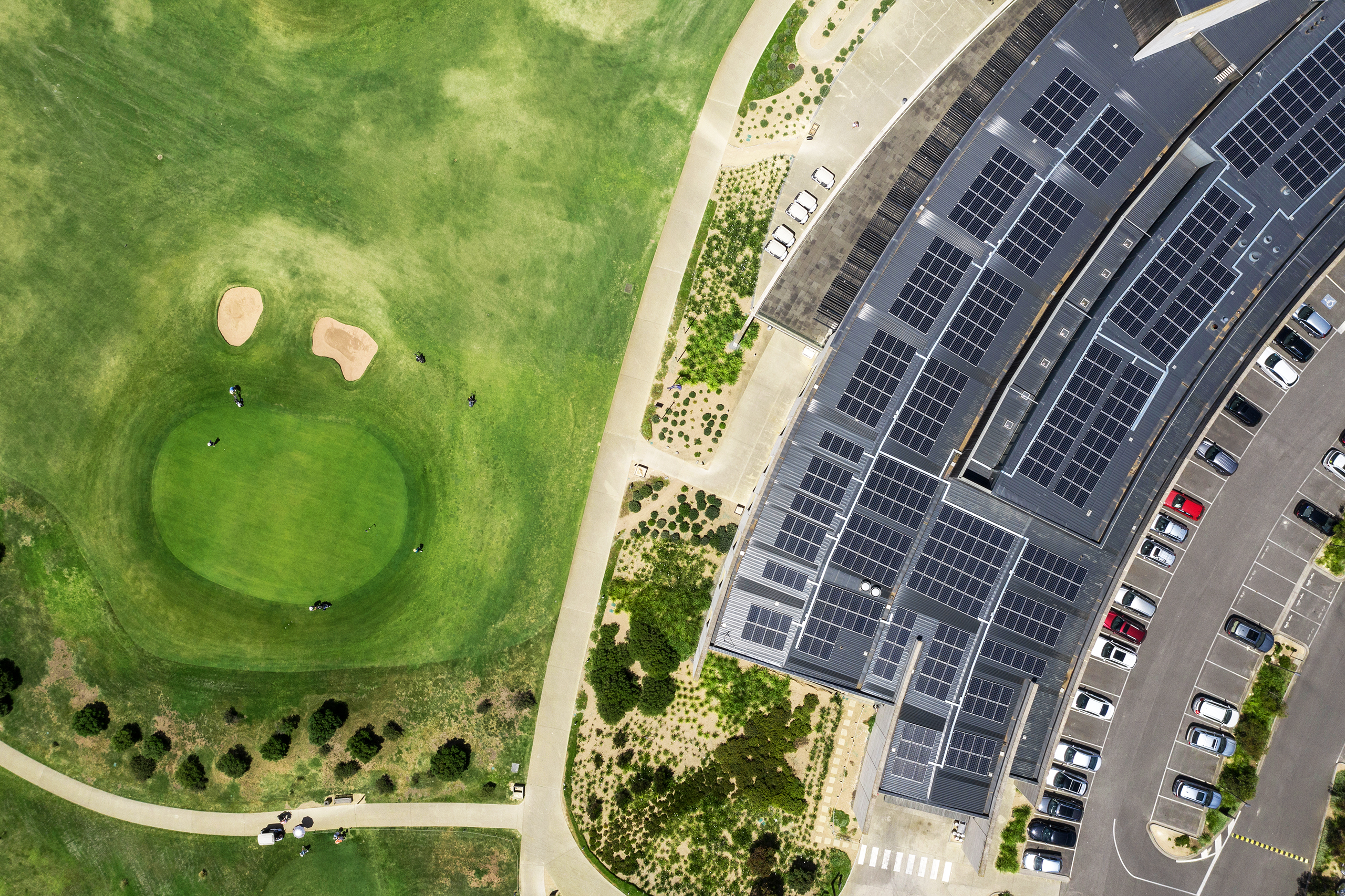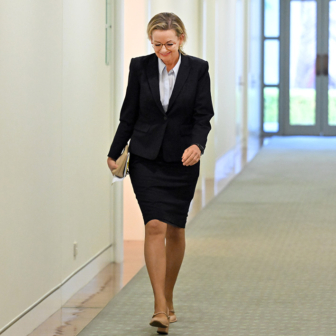“This is an Australian industry that’s been developed here, and the government doesn’t seem to recognise that,” says Richard McIndoe, chairman and founder of Edge Zero, which tracks voltage and power quality across electricity transmission networks.
Batteries, electric vehicle chargers and heat pumps are being added to solar panels by more households and businesses, intensifying the challenge of maintaining safe grid voltages, balancing supply and demand, cutting emissions and doing it all at an affordable cost. Labor’s home batteries program will help, but it will also make finding solutions more imperative.
What McIndoe is describing is a growing bunch of homegrown technology companies leading the global race to solve teething problems and other hurdles along the road to clean energy. Embracing their solutions could help get the transition back on track, solve the problem of whipsawing supply and demand from four million solar households and dispel doubts and confusion about clean energy in rural Australia.
You’d hardly know it from a public debate that pits nuclear power against renewables, wind turbines against whales and rural folk against the inner city, but firms like McIndoe’s might be the transition’s unsung heroes. “It frustrates the hell out of me because [overseas] companies are saying, ‘Wow, we’re really interested in this,’” McIndoe says.
Coming up with practical solutions to bottlenecks between investors, generators, distributors and end users, these companies are winning fans in global markets facing the same challenges Australia’s distribution networks began to grapple with a decade ago, when wind and solar energy took early flight here.
The ultimate prize could be a big new export industry to substitute for fossil fuels — a “Silicon Valley for energy,” says Audrey Zibelman, a director of investment bank Pollination and former chief executive of the Australian Energy Market Operator. “The traction that Australian companies are getting in the US is further evidence that Australia is leading the transition technically, and is a fertile ground for developing the technologies,” she says.
Yet they fly under the radar here, appreciated by distribution and transmission network operators and other customers, backed by some government grants — including Labor’s recently announced $30 million for grid-enhancing technology — but rarely celebrated by political leaders in the way manufacturing or mining exporters are.
These solutions are urgently needed. Since voters endorsed the Albanese government’s ambitious renewable energy plans on 3 May, benchmark retail power prices have increased again, and the soaring costs of high voltage transmission lines spurred AEMO to consider the alternative of enhancing distribution networks. A week before the election, an epic blackout in Spain drew attention to the challenges of keeping rapidly changing grids within safe voltage and frequency limits.
The good news is that these challenges can be solved, and local firms were on the case early.
Energy tech firms are born of necessity — in this case the challenges thrown up on the road from centralised fossil fuel–based electricity generation to decentralised renewables. A profusion of startups have sprung to life in the last decade with the common goal of helping energy suppliers and their customers make the most of the transition to net zero.
This article focuses on companies with technologies that can help grid operators and retailers make large gains in efficiency, reliability and affordability by better use of technologies already broadly accepted in the marketplace. They can also optimise emerging technologies — such as vehicle-to-grid charging — to further enhance the system.
Some of these startups monitor local and regional distribution networks — the poles and wires down your streets and arterial roads — to help their operators run them efficiently. They assist in maintaining safe voltages as rooftop solar floods into the grid on sunny days, keeping wires free of vegetation, and minimising fire and extreme weather risk. (Distribution networks are the poles and wires in your streets, connecting customers to high-voltage transmission networks and bulk electricity generation.)
McIndoe’s company, Edge Zero, tracks voltage and power quality across the transformers on power poles to check if they are running at correct voltages, see how much extra solar and EV charging they can host, and managing usage to help ease the squeeze during demand spikes. Customers include Endeavour Networks and Ausgrid in New South Wales, SA Power Networks and the Vermont Electric Co-op and Virginia-based Dominion Energy in the United States.
If the voltage is running 10 per cent higher, customers are being force-fed 10 per cent more electricity than they need, McIndoe says. Part of Edge Zero’s business case for Endeavour to put in 10,000 monitors across its network was that they would be able to manage the voltage close to the correct level and — by eliminating the excess — reduce customer consumption by up to 10 per cent.
“This is giving me real-time visibility of not just what’s there,“ he says, “but also how much more solar I can tolerate before I need to be thinking about upgrading the size of the [poles and wires]. We’re just providing the visibility that allows other technologies to do that control.”
Sydney-based Neara uses AI-powered software to monitor poles and wires for the fallen trees or bushfires that threaten the network with outages, prioritise maintenance in fault-prone areas, and spotlight spare capacity going begging for wind and solar power. In 2023 it estimated NSW’s networks could host an extra 10 gigawatts of power with a minimal capital spend.
Customers include Endeavour, Essential Energy and Ausgrid in New South Wales, PowerCor and AusNet Services in Victoria, and SAPN. Southern California Edison got in touch after being fined $US500 million because of wildfire-induced outages. CenterPoint Energy in Texas came on board after being hit by extreme weather.
Neara’s chief commercial and operations officer Jack Curtis says the company is helping CenterPoint navigate extreme weather by identifying potential points of failure that could cascade into wider failures. “It’s essentially being able to say, ‘All right, if we spend $1 here, we don’t have to spend $10 on the back end fixing ten assets that fail, because we only really have to make sure that one asset didn’t fail.”
Curtis says there’s a dawning realisation that distribution networks can play a bigger role in delivering clean, zero-carbon energy faster and at lower cost than the big transmission projects and utility-scale solar and wind farms that get bogged down by community objections and long approvals processes.
If renewable energy zones, or REZs, in New South Wales were opened up to distribution networks and not confined to the high-voltage transmission network, “it would enable someone to come forward and say, ‘Hey, I can put 200 megawatts of solar on a bunch of warehouses and have a cheaper, faster result,’” Curtis says. (REZs seek to bring on new wind, solar and battery projects with the required transmission.)
Wollongong-based Gridsight uses AI-powered software to distil data and insights from network maps, smart meters and third parties (such as Edge Zero and Neara) to better manage complex decentralised grids. It could advise customers to invest in batteries to avoid more expensive network upgrades, for example, or identify extra solar-hosting capacity by using “dynamic” — rather than static — line ratings. Its customers include Endeavour, Canberra distribution network Evo Energy, Horizon Power in Western Australia and Energy Queensland.
Founder and CEO Brendan Banfield says utilities in the United States and Europe look to Australia for a roadmap as the penetration of solar panels, EV chargers and other customer energy resources increases. He hopes Australia can use this recognition “to accelerate the adoption of these technologies over the next few years.”
Gridsight’s insights help customers understand where their grids are constrained, Banfield says. They tell them how solar panels, batteries and EVs are affecting grid constraints, and how they can host more customer-owned energy resources as households and businesses invest in them.
Uptake will likely accelerate under Labor’s offer to cover 30 per cent of the cost of a household or business battery from 1 July, an outlay of $2.3 billion over four years.
Infravision uses drones to hang transmission lines, cutting costs and the risk of accidents and fatalities among the linesmen and helicopter pilots who traditionally did the work. After a pilot hanging lines in South Australia died in an accident in 2019, Transgrid and Ausgrid in NSW and Powerlink in Queensland decided there must be a better way, and Infravision’s bespoke heavy-lift drones met the bill.
California utility Pacific Gas & Electric asked them to tackle a decade’s worth of tough unfinished jobs, the AI boom turbocharged demand in the United States, staff will jump from 100 to 500 within two years — and not even Donald Trump can stop it.
The company is now headquartered in Austin, Texas, the better to tackle the growing demand for its unique services. “We’ve had more inbound interest in our business in this category than I’ve ever, ever experienced,” says Cameron Van Der Berg, co-founder and chief executive. “We’ve got no issues with runway or anything like that. It’s more, ‘how do we grow sustainably at the rate that our customers are demanding our product and services?’”
Two more startups are trying to solve another puzzling problem: “Commercial and industrial” customers — or small and medium enterprises — lag far behind residential customers in adopting rooftop solar and batteries, despite consumption patterns that better match solar supply.
One reason is that they typically rent their premises, and landlords have few incentives to instal solar panels for the benefit of their tenants. Another is that they lack the skills to analyse their options across different solar arrays, battery capacities and tariffs.
Orkestra Energy’s software tackles this skills gap by helping installers to model hundreds of combinations of solar panels, batteries and tariffs for commercial and industrial firms — and identify the best options — at a fraction of the cost charged by large consultancies for the same work.
The software was used to model 500 kilowatt one-hour batteries and virtual power plant participation for RACV’s Torquay and Inverloch resorts, which already had solar panels and EV chargers. It’s also been used to model projects for Origin Energy, commercial solar installer GEM Energy and residential installer Energy Locals.
Orkestra initially identified the biggest knowledge gap was in modelling battery business cases against tariffs for commercial and industrial firms, co-founder and co-CEO James Allston says. But they also model solar panels, appliances such as EV chargers, participation in virtual power plants and markets for FCAS (system-strength services) and arbitrage (storing power when it’s cheap and selling when it’s expensive).
Power purchase agreements bundling up any or all of these pieces can help bridge the incentives gap between businesses and landlords. The software can bring all the different elements together and help determine the size of the asset and work out commercial returns, often 15 per cent to 35 per cent per annum, Allston says.
“We can train a salesperson or a junior analyst to be able to produce a high quality, bankable feasibility study for one of these investments in about fifteen to twenty minutes of work. And we’re trying to take that to being about five minutes of work using AI.”
Perth-based Gridcog provides energy transition modelling for larger companies and their projects — such as Shell’s P2X charging rollout in Europe, Ampol’s charging sites in Victoria, TransLink’s electric bus chargers in Queensland, and large supermarkets — to identify optimal solar, battery and EV charging solutions.
Fabian Le Gay Brereton, Gridcog’s co-founder and chief executive, says its role is to help direct the vast investments required for the energy transition into the right assets in the right locations, with the right technical and commercial operating models, and accelerate that investment by building confidence.
While flagship investments in grid-scale generation and transmission are slow to bear fruit, customers can help to accelerate renewables investments and cut carbon emissions by installing their own energy resources in the meantime.
“There’s this obvious case for trying to get more investment in the distribution network and empowering consumers because you can do that really quickly,” he says. “You can’t build a nuclear power plant quickly and even building a renewable energy zone in western New South Wales is going to take a long time.”
Wider adoption of the technologies described here can build on Australia’s clean-energy advantages, especially those that maximise existing network capacity, says Paul Gleeson, head of energy for Australia at engineering giant Aurecon.
But these technologies still face hurdles. For example, those that depend on customers “opting in” to virtual power plants or other demand management markets may run into the natural disinclination of many — especially older — people to surrender control of their batteries, EVs and chargers, Gleeson says. Aggregate benefits may be measured in the billions of dollars by AEMO, but the benefits for individual households may be “fairly boring.” This may change over time but “it is a barrier right now.”
Still, despite many headwinds, the energy transition has a lot going for it. Prices for some transition goods — solar panels, batteries, EVs, EV chargers and (at least in China) wind turbines — continue to fall; the consequences of climate change are impossible to ignore; and governments are loading their policy slingshots and taking aim at the right targets.
Smart grids are more efficient too. The methods traditionally used by electric utilities to meet peak demand from large, centralised station power plants were necessary but notoriously inefficient, says Zibelman. In contrast, the new technologies being developed in Australia can support energy systems that are decarbonised and more efficient, resilient and reliable because they maximise the use of all resources.
“For electric utilities, deploying these type of technologies should be the power grid equivalent of flossing your teeth — we do it because it is the right thing to do,” Zibelman says. “It’s an opportunity for Australia to show how the grid can and should transition to the power system of the future, and to offer these solutions globally rather than allow them to be exploited by others — as locally developed wifi and solar panel technologies were in the past.” •




